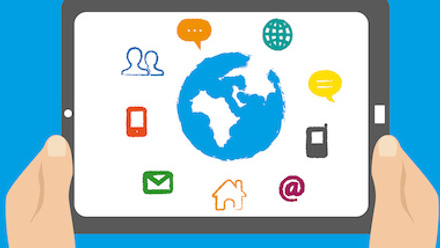Home worker health: how to support employee physical, mental and social wellbeing during lockdown

As the UK initiated lockdown in the wake of the coronavirus pandemic, businesses braced for an undetermined period of disruption and many had to adapt their working practices quickly in order to continue operating, including working from home arrangements and furlough schemes for employees.
Although restrictions have eased somewhat, a great deal of ground needs to be covered before normalcy returns. Businesses, therefore, need to ensure that provisions for worker wellbeing are fit for the current and changing situation.
It appears that businesses are aware of this need. In a study by Willis Towers Watson, two-fifths (42 per cent) of companies said they have made, or are planning to make, significant changes to their benefit programmes as a result of the COVID-19 pandemic. A third of employers are also likely to revise their healthcare strategies for 2021.
Encouragingly for employees, more companies are looking to enhance certain benefits than reduce them, including enhancing wellbeing programmes (60 per cent) and mental health and stress management services (58 per cent).
Here, we explore ways in which employers can support their home workers’ wellbeing during this period of lockdown.
Looking after the physical self
When lockdown commenced, staff faced new challenges such as solitary working, juggling caring responsibilities and increased workloads and tasks.
As lockdown restrictions and social distancing are extended indefinitely, many workers will be continuing to grapple with these challenges for the foreseeable future.
With some time having passed since the transition to home working, many workers will have settled into a routine by now – but it is important that companies help to keep up momentum and give workers the tools they need to ensure they continue with their schedule.
Although workers may have the best intentions, pressures from home may result in scheduling falling by the wayside. Employees will be more likely to stick to the schedule if there are clear boundaries and breaks will give employees a much-needed boost.
Aim to help workers plan their own day with time management resources, such as digital to-do lists and time management apps, and schedule regular calls with team members to ensure workloads are manageable for their situation.
From a physical health perspective, for some workers, lockdown will have inspired them to become fitter and healthier.
Indeed, Halfords has reported that sales of some cycling equipment had risen by 500 per cent since the lockdown, and bike sales doubled last month.
Cycle-to-work schemes giving tax benefits to employees to buy a new bike from official stores have also reported a doubling in sales.
However, for others, the change in routine will have had a negative impact on physical fitness, with their normal routine interrupted by gyms and studio closures, and working from home meaning sedentary ways are more easily adopted.
Arming employees with regular, practical, encouraging knowledge can help give them the start they need to get their activity levels up, adapt to their situation, and avoid getting ‘stuck in a rut’.
This can be daily or weekly bulletins of suggested workout plans, from armchair exercises to bodyweight exercises, or tests that workers can do at home to measure their fitness levels and help them set goals. Comradery and engagement can be boosted by launching an employee-led support group, or ‘fitness forum’, where employees can swap tips on different types of exercises, run league tables and share their successes.
Sharing healthy recipes with employees, and encouraging employees to do the same, can help encourage good nutrition, bring colleagues together, as well as keep them distracted during isolation.
In the way of benefits, promoting the company’s cycle-to-work scheme, and incorporating more technology-based benefits, such as access to fitness apps, online yoga tutorials, and nutritional advice, may boost physical wellness amongst employees.
Physical health is not limited to eating healthily and exercising.
Since the coronavirus lockdown, the hashtag "can't sleep" has been trending, with reports of insomnia spiking, commonly attributed to the combination in a loss of routine and higher stress levels.
Companies can consider offering sleep management advice, such as not working from bed and limiting alcohol consumption, as well as sleep tracking apps.
On the subject of alcohol, companies may also look to offer advice in this area. According to Alcohol Change UK, around one in five drinkers (21 per cent) said that they have been drinking more frequently since the lockdown. As well as offering access to alcohol management services, companies can encourage ‘dry activities’ amongst employees, such as virtual book clubs and zoom fitness classes.
Companies may also look at adapting their access to medical consultations during the period, to meet demand and encourage employees to seek help when they need it. According to the recent Willis Towers Watson survey, two-in-five (39 per cent) employers have provided, or expanded, access to telemedicine during the pandemic.
Home working environments will likely not be ergonomically designed and the use of a makeshift workstation for an extended period may result in back pain for some workers.
Communications can be used to drive home the importance of a fit-for-purpose workstation, as well as to encourage time away from the computer and stretches, which may help with posture and alleviate pressure.
There is also an option of offering access to virtual sessions with physiotherapists, as well as access to core-strengthening classes online, such as Pilates and yoga.
Enhancing emotional support
Emotional wellbeing is an area that needed particular attention during the pandemic.
This is undoubtedly a stressful time for employees, with job insecurity, health anxiety, and isolation just some of the many challenges faced by workers.
According to the Office of National Statistics (ONS), 47 per cent of people have reported “high levels” of anxiety during the pandemic.
Over four in five of people surveyed – 84 per cent – said they were worried about the effect the virus is having on their life, while 53 per cent said it was affecting their well-being.
During this time, it is important that employees know that they are not “out of sight, out of mind”. Being flexible about adjustments based on individual experiences and pressures can help mitigate stressors, as can being honest about how the business is doing and reassuring employees of what is known, and encouraging open discussion about worries and concerns.
Regular check-ins and wellbeing surveys can help companies gauge anxiety and stress levels on an individual, team and company-wide basis.
Encouragingly, over a quarter (28 per cent) of employers have taken action to measure employee anxiety during the current period, with a further 47 per cent planning or considering this action, according to the Willis Towers Watson COVID-19 survey.
In times of stress and uncertainty, Employee Assistance Programmes and mental health services become even more important and employees that haven’t used these services in the past may need reminding that companies often have a network of valuable support services available to employees.
Ramping up benefits communications is therefore important during this period. Indeed, almost two-thirds (61 per cent) think that communication of benefits and wellbeing programmes will be a top priority this year, with Employee Assistance Programmes taking the number one spot on the list for awareness raising (79 per cent).
Due to the constraints of the pandemic, the use of technology to provide support is key.
Thankfully, there are many health apps, online support forums, wellbeing webinars, and mindfulness tools that can be accessed remotely and in confidence.
Companies are prioritising these tech-focused benefits, with 65 per cent of those companies who are enhancing benefits communications looking to raise awareness of their online mental health services and 47 per cent seeking to raise awareness of access to wellbeing apps.
Adapting the Mental Health First Aid support may also be necessary, and companies can work with volunteers to offer remote sessions to employees through their preferred medium, be it video call, phone or instant messaging.
Not forgetting the social element
Social wellbeing may be seen as a ‘nice to have’ aspect of worker wellbeing but, during this challenging climate, it is more important than ever.
According the Mental Health Foundation, feelings of loneliness have more than doubled over the lockdown period, with almost one quarter (24 per cent) of UK adults saying they have felt loneliness because of coronavirus.
With workers cut off from family, friends and colleagues for months at a time, social isolation is rife during the pandemic, but efforts can be made to bring colleagues together, stay connected and feel less alone.
For many employees, the workplace is where they get most of their social interaction, so companies should ensure that their communications with employees are not just task-focused.
Social catch-ups and virtual activities, such as coffee mornings, ‘cake-offs’, quizzes, and charity fundraisers, can help boost morale, lift spirits and evoke a sense of inclusion.
Commendation is important to the promotion of social wellbeing, so employees can be encouraged to share any good news that they may have, such as a new skill or work task achievement, which can be celebrated with the wider team.
Companies should be wary of forcing activities on employees – these should be employee-led and ‘opt-in’. By seeking feedback from employees on what social activities they would like to participate in, employers may be able to ensure high levels of engagement.
Looking to the future
These are unprecedented times, and companies have had to be flexible in order to cater for the changing needs of the workforce during a tumultuous and uncertain period.
Undoubtedly, needs will continue to change as the situation develops further and other unforeseen challenges may arise.
However, if companies are willing to adapt their wellbeing strategies and adopt new approaches to benefits provision, they will be better placed to weather the storm and provide the necessary support to see their employees through to the other side.
It is a trying time for both employers and employees, but companies should remember that their workers form the backbone of their business and if they take the appropriate action to support worker wellbeing now, then they will benefit from a healthy, fit, loyal and resilient workforce when we emerge from this crisis.
The author is Mike Blake, wellbeing lead at Willis Towers Watson.
This article is provided by Willis Towers Watson.
In partnership with WTW
WTW is a leading global advisory, broking and solutions company.







